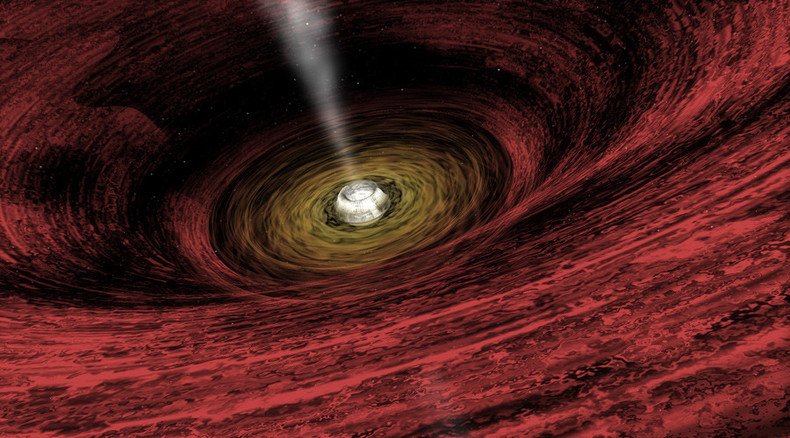NASA explains how black hole ‘fountain’ regulates galaxy star birth

Astronomers have discovered how the universe's largest elliptical galaxies are able to continue making stars long after their peak “star birth” years. The finding was made using NASA's Hubble Space Telescope.
Such a discovery was no small feat, as it required the combination of Hubble data with observations from ground-based and space telescopes.
After analyzing the information gathered, two independent teams determined that the black hole, jets, and newborn stars are part of a self-regulating cycle.
Dark side of Moon finally brought into light – thanks to NASA (VIDEO) http://t.co/KZ7RQTOnTapic.twitter.com/cVgEuoK2er
— RT (@RT_com) August 6, 2015To be more specific, high-energy jets shooting from the black hole heat a halo of surrounding gas. This controls the rate at which the gas cools and falls into the galaxy.
“What we are seeing is a process like a thunderstorm. As the jets propel gas outward from the center of the galaxy, some of that gas cools and precipitates into cold clumps that fall back toward the galaxy’s center like raindrops,” said Megan Donahue of Michigan State University, leader of one of the studies, as quoted by NASA.
Those 'raindrops' eventually cool down and become star-forming clouds of molecular gas, according to the lead of the second study, Grant Tremblay of Yale University.
“We know that these showers are linked to the jets because they’re found in filaments and tendrils that wrap around the jets or hug the edges of giant bubbles that the jets have inflated,” Tremblay said. “And they end up making a swirling ‘puddle’ of star-forming gas around the central black hole.”
But the amount of raining gas is kept to a minimum, because although some of the outwardly flowing gas manages to cool, the rest of the gas around the galaxy is heated by the black hole.
Real-life sci-fi: NASA creating robotic drones for space explorations http://t.co/tON1DSaUGOpic.twitter.com/xvAqTSgpDm
— RT (@RT_com) August 5, 2015It's a process that NASA has described as a “self-regulating feedback mechanism,” comparing it to a thermostat on a house's heating and cooling system.
Since the 'puddle' of gas around the black hole provides the fuel that powers the jets, those jets become more powerful and add more heat if too much cooling occurs. If the jets add too much heat, they reduce their fuel supply and ultimately weaken.
The findings answer an age-old mystery in the world of astronomy.
Scientists have long wondered by galaxies awash in gas don't turn all of that gas into stars. However, it has now been confirmed that star births are being moderated by the cycle of heating and cooling.
Stunning image from Hubble telescope shows Milky Way-like galaxy http://t.co/03Jt05YQJ6pic.twitter.com/TStjqY5g4l
— RT (@RT_com) July 13, 2015Donahue's study involved looking at far-ultraviolet light from a number of massive elliptical galaxies found in the Cluster Lensing And Supernova Survey with Hubble (CLASH), which contains elliptical galaxies in the distant universe. These included some galaxies that were raining and forming stars, and others that weren't.
Meanwhile, Tremblay's study only looked at elliptical galaxies in the nearby universe with fireworks at their centers.
The filaments and knots of star-birth appeared to be a similar phenomenon in both cases.













